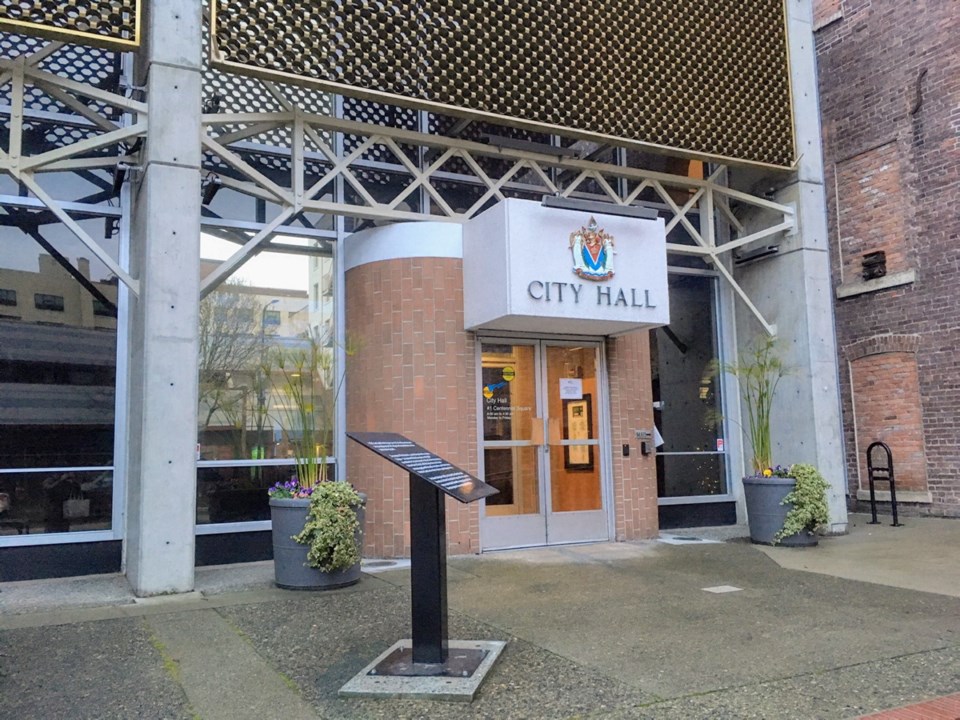Victoria city council agreed Thursday to push ahead with efforts to establish a civilian team that would handle many of the mental-health and addictions calls currently dealt with by police.
Councillors unanimously approved a motion directing staff to review programs in other jurisdictions — including the CAHOOTS service in Eugene and Springfield, Oregon — and report back in time for 2021 budget talks.
Coun. Sarah Potts told council that the rising number of drug-overdose deaths as well as the police shooting of Chantel Moore in New Brunswick and other incidents have shown the need for a new approach. Moore, a 26-year-old Port Alberni mother, was killed June 4 during a police wellness check.
“It seems right now that, over the last few months, the cracks in our system really have been showing,” she said.
“I mean, they always, always have been there. But it feels like now we just can’t look away. We have to be doing something different.”
Councillors said the goal is to develop a made-in-Victoria approach through discussions with people in the community.
But they said CAHOOTS, which stands for Crisis Assistance Helping Out On The Streets, illustrates how such a program could work.
In operation for more than 30 years, CAHOOTS deploys two-person teams consisting of a medic and a crisis worker. They’re dispatched 24 hours a day through police emergency and non-emergency numbers to deal with non-criminal crises involving mental illness, homelessness and substance use.
Tim Black, CAHOOTS operations co-ordinator, said in an interview Thursday that the program has a budget of just under $2 million and responded to about 17 per cent of the public-safety calls in Eugene last year, for a total of 18,000 calls. It answered another 6,000 in Springfield.
Of those 24,000 calls, fewer than 150 required emergency back-up by police for instances where people turned violent or were in danger of hurting themselves or others, he said.
Coun. Jeremy Loveday said it’s a model worth examining.
“It’s clear that 99.4 per cent of calls that they respond to don’t end up needing police involvement,” he said. “That’s a very high percentage.
“We need an approach that’s going to be that effective in our community.”
The CAHOOTS program has gained attention in recent weeks amid worldwide protests over the death of George Floyd while in Minneapolis police custody. Floyd, a black man, died last month after a white officer knelt on his neck for nearly nine minutes, touching off demonstrations that have included calls to defund police and shift resources to social-service agencies.
Black said the program’s mobile crisis teams respond to front-line behavioural health calls, such as mental-health crises, as well as non-emergency medical cases such as bandage changes, dealing with abscesses and providing basic first-aid.
The program not only saves money on policing, it diverts people from more expensive medical care in emergency departments, he said.
“For some people, social isolation is the key,” he said. “You know they’re going to the ER for an upset stomach, not because the stomach ache is so bad, but because they just want to interact with somebody else. So we can come out and have that social interaction with somebody, talk with him about getting plugged into the senior centre or whatever.”
If somebody’s intoxicated, CAHOOTS can lodge them at a sobering centre without having to involve police or emergency-room doctors.
Black said it’s also a more compassionate approach than expecting police and firefighters to deal with situations without sufficient training. “You know, firefighters going in to talk to people about chronic medical conditions. Police officers being forced to act as social workers.”
CAHOOTS teams can sometimes de-escalate situations simply by their non-threatening appearance, he said.
“We drive a big, ugly, white van that doesn’t look anything like a fire truck or a police car,” he said. “We’re dressed in a T-shirt and jeans and some work boots. That visual representation can really allow folks to let their guard down and engage in that conversation and engage in that intervention without the same level of defence and the same wariness that comes along with those police interactions.”



